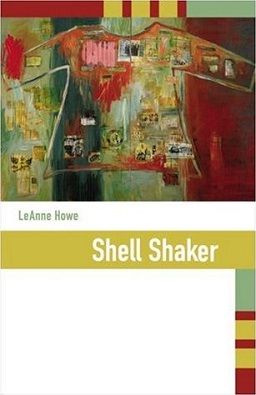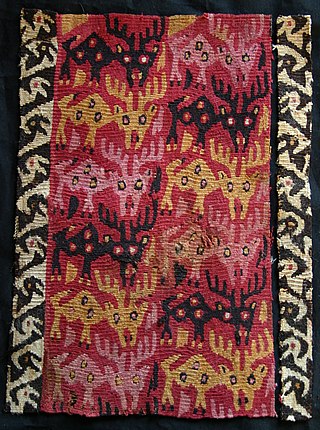Related Research Articles

The Choctaw are a Native American people originally based in the Southeastern Woodlands, in what is now Mississippi and Alabama. The Choctaw language is a Western Muskogean language. Today, Choctaw people are enrolled in four federally recognized tribes: the Choctaw Nation of Oklahoma, Mississippi Band of Choctaw Indians, Jena Band of Choctaw Indians in Louisiana, and the Yowani Choctaws enrolled under the confederacy of the Caddo Nation. Choctaw descendants are also members of state-recognized tribes.

The Chickasaw are an Indigenous people of the Southeastern Woodlands, United States. Their traditional territory was in northern Mississippi, northwestern and northern Alabama, western Tennessee and southwestern Kentucky. Their language is classified as a member of the Muskogean language family. In the present day, they are organized as the federally recognized Chickasaw Nation.

The Mardi Gras Indians are African American carnival revelers in New Orleans, Louisiana, known for their elaborate suits and participation in Mardi Gras. The Mardi Gras Indians subculture emerged during the era of slavery from West African, Afro-Caribbean and Native American cultural practices. The Mardi Gras Indians' tradition is considered part of the African diasporan decorative aesthetic, and is an African-American art form.

The Choctaw Nation of Oklahoma is a Native American reservation occupying portions of southeastern Oklahoma in the United States. At roughly 6,952,960 acres, it is the second-largest reservation in area after the Navajo, exceeding that of the seven smallest U.S. states. The seat of government is located in Durant, Oklahoma.

Shell Shaker (2001) is a novel by American LeAnne Howe. The novel's plot revolves around two tales of murder involving historical Choctaw political leaders. Set over a 200-year period, it focuses on several generations of the fictional Billy family, who try to keep the peace. It won the 2002 Before Columbus American Book Award.
Kay WalkingStick is a Native American landscape artist and a member of the Cherokee Nation. Her later landscape paintings, executed in oil paint on wood panels often include patterns based on Southwest American Indian rugs, pottery, and other artworks.

The visual arts of the Indigenous peoples of the Americas encompasses the visual artistic practices of the Indigenous peoples of the Americas from ancient times to the present. These include works from South America and North America, which includes Central America and Greenland. The Siberian Yupiit, who have great cultural overlap with Native Alaskan Yupiit, are also included.

Juanita Growing Thunder Fogarty is a Native American, Assiniboine Sioux bead worker and porcupine quill worker. She creates traditional Northern Plains regalia.

Linda Lomahaftewa is a Native American printmaker, painter, and educator living in Santa Fe, New Mexico. She is a citizen of the Hopi Tribe and a descendant of the Choctaw Nation of Oklahoma.
Ribbon work is an appliqué technique for clothing and dance regalia among Prairie and Great Lakes indigenous peoples.

Two-spirit is a contemporary pan-Indian umbrella term used by some Indigenous North Americans to describe Native people who fulfill a traditional third-gender social role in their communities.

The textile arts of the Indigenous peoples of the Americas are decorative, utilitarian, ceremonial, or conceptual artworks made from plant, animal, or synthetic fibers by Indigenous peoples of the Americas.
Native American feminism or Native feminism is, at its root, understanding how gender plays an important role in indigenous communities both historically and in modern-day. As well, Native American feminism deconstructs the racial and broader stereotypes of indigenous peoples, gender, sexuality, while also focusing on decolonization and breaking down the patriarchy and pro-capitalist ideology. As a branch of the broader Indigenous feminism, it similarly prioritizes decolonization, indigenous sovereignty, and the empowerment of indigenous women and girls in the context of Native American and First Nations cultural values and priorities, rather than white, mainstream ones. A central and urgent issue for Native feminists is the Missing and murdered Indigenous women crisis.

Native American fashion is the design and creation of high-fashion clothing and fashion accessories by Native Americans in the United States. This is a part of a larger movement of Indigenous fashion of the Americas.
Margaret Roach Wheeler is a Chickasaw/Choctaw weaver and Native American fashion designer. Her work has been widely recognized for her scholarship in researching designs and techniques which existed prior to conquest and incorporating design elements into her woven garments. Her work has been featured in numerous collections including the Smithsonian's National Museum of the American Indian, where she has also served as a visiting artist and received a research fellowship. She was inducted into the Chickasaw Nation Hall of Fame in 2010 and was honored by the State of Oklahoma with the Governor's Arts Award in 2018 for her unique contributions to art. She is the founder of Mahota Textiles.

The Centennial Land Run Monument is an art installation by Paul Moore, located in the Oklahoma City Bricktown District, in the U.S. state of Oklahoma. It commemorates the Land Run of 1889 in the Unassigned Lands.

The REDress Project by Jaime Black is a public art installation that was created in response to the missing and murdered Indigenous women (MMIW) epidemic in Canada and the United States. The on-going project began in 2010 and commemorates missing and murdered indigenous women from the First Nations, Inuit, Métis (FNIM), and Native American communities by hanging empty red dresses in a range of environments. The project has also inspired other artists to use red to draw attention to the issue of MMIW, and prompted the creation of Red Dress Day.

Brenda J. Child is an Ojibwe historian and author.
Jaime Black is a Canadian Red River Métis multidisciplinary artist and activist of Anishinaabe and Finnish descent. Jaime lives and works on her home territory near the confluence of the Red and Assiniboine Rivers.

Mitchelene BigMan is an Apsáalooke (Crow/Absaroke) / Minitari (Hidatsa) U.S. Army veteran and advocate, best known for establishing the Native American Women Warriors (NAWW), the first all-female native Color Guard.
References
- ↑ Lenihan, Regan (2021-03-05). "Women's History Month: Isabella Aiukli Cornell". monah. Retrieved 2023-03-24.
- 1 2 Vong, Sam (2020-11-24). "Isabella Aiukli Cornell makes prom political". National Museum of American History. Retrieved 2023-03-23.
- ↑ Magazine, Smithsonian; Wu, Tara. "How Girls Have Brought Political Change to America". Smithsonian Magazine. Retrieved 2023-03-23.
- ↑ "Prom dress calls attention to missing, murdered Indigenous women at Smithsonian exhibit". Williams News. Retrieved 2023-03-23.
- 1 2 Sears, Emma. "Native Oklahoma Woman's Prom Dress on Exhibit in Smithsonian". Gaylord News. Retrieved 2023-03-24.